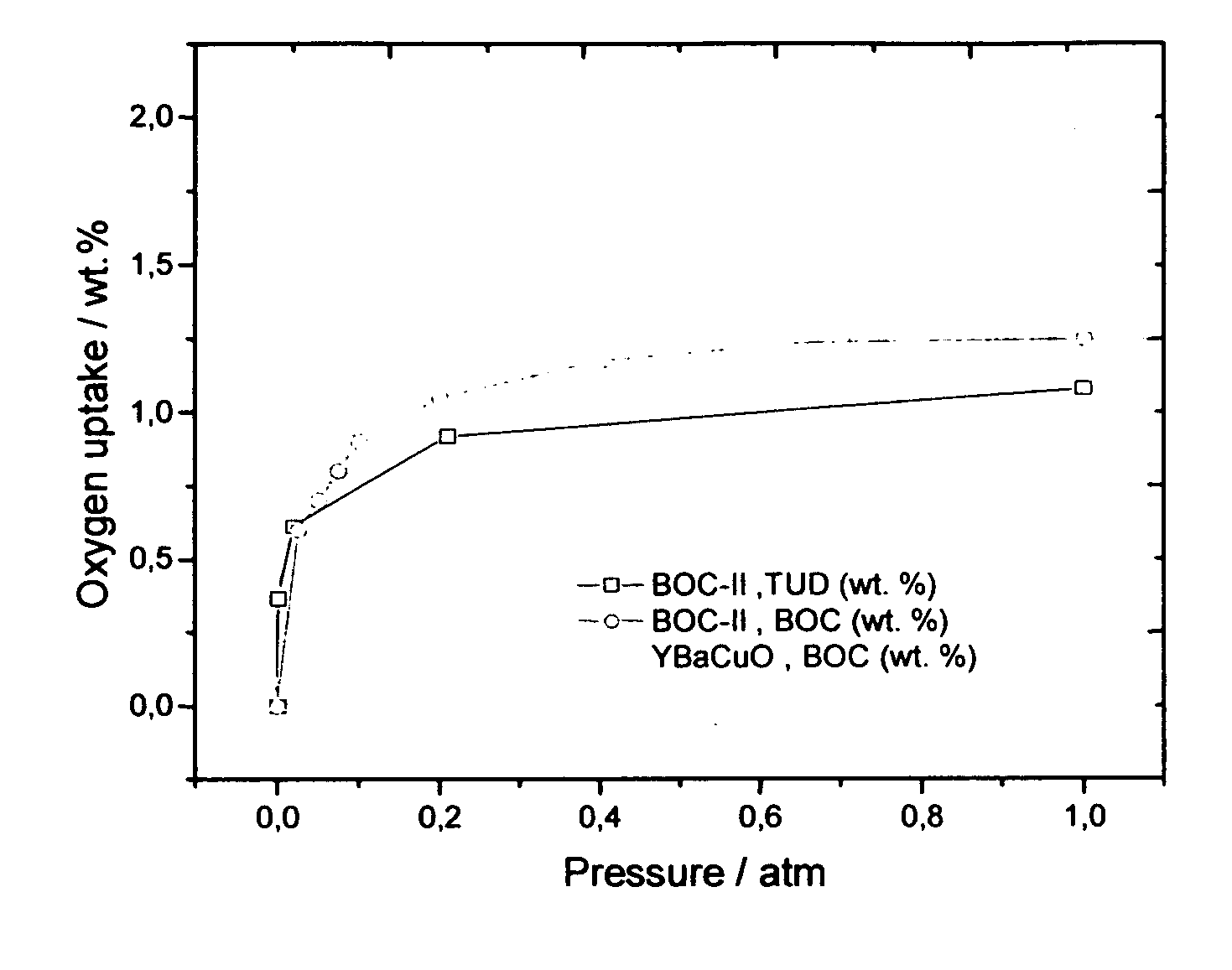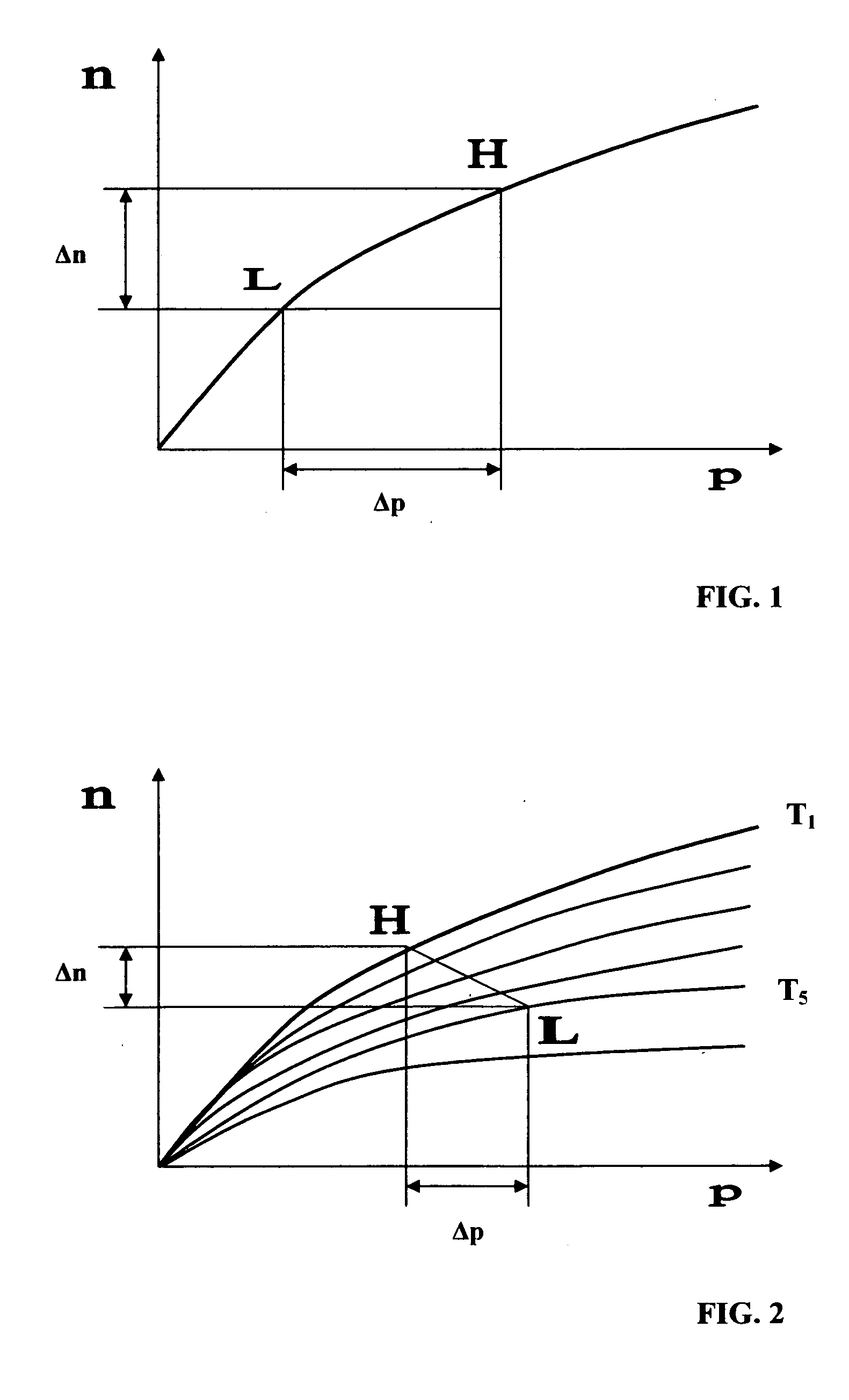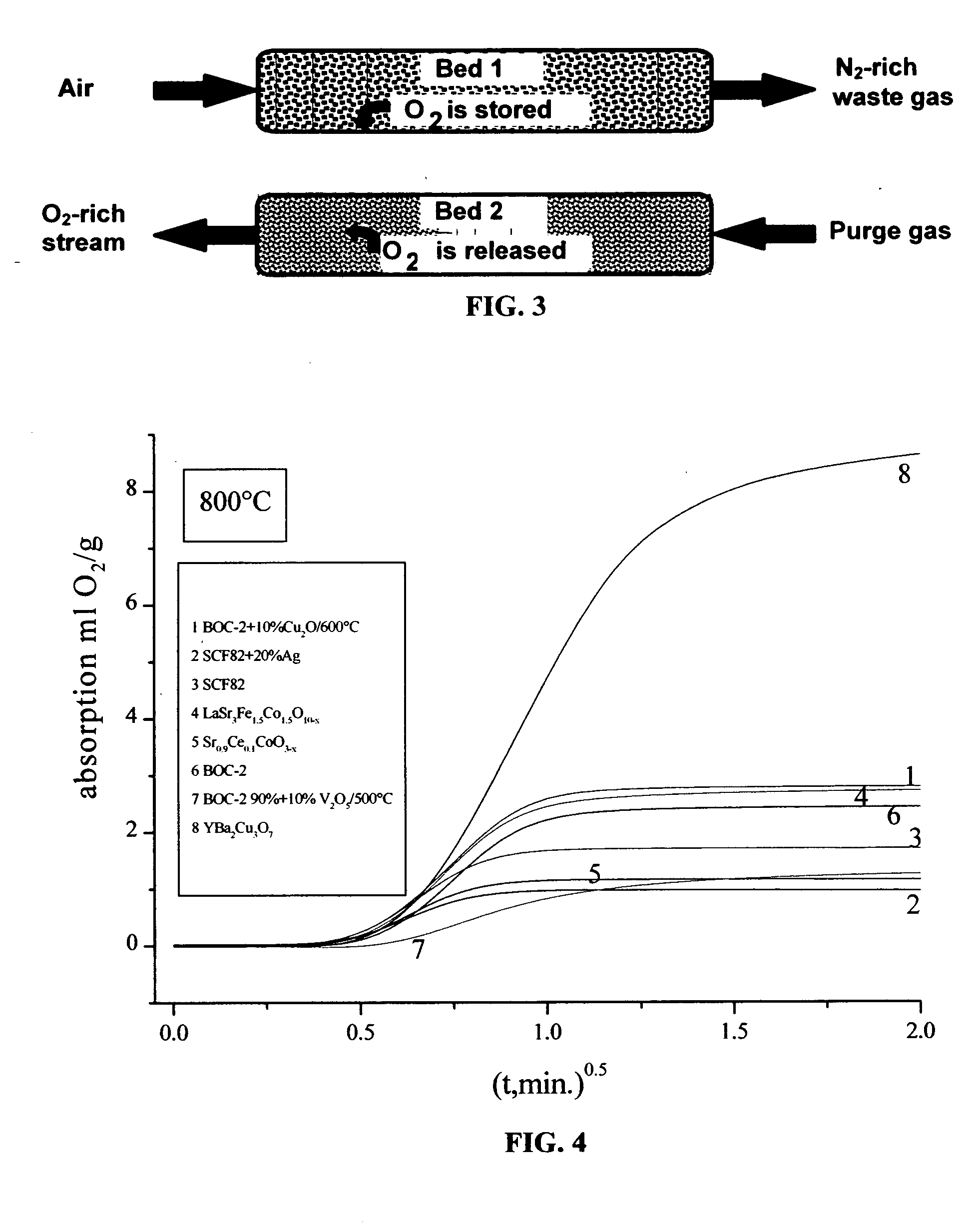Oxygen sorbent compositions and methods of using same
a technology of sorbents and compositions, applied in the direction of superconductor devices, separation processes, conductors, etc., can solve the problems of limited success, limit the performance potential of perovskites, and limit the ability of perovskite and perovskite-like materials to function as commercial sorbents, etc., to achieve high o2 permeation flux, increase the effect of o2 capacity and high o2 capacity
- Summary
- Abstract
- Description
- Claims
- Application Information
AI Technical Summary
Benefits of technology
Problems solved by technology
Method used
Image
Examples
example 1
[0080] Oxygen sorption-desorption characteristics such as exchange-capacity data was measured by means of a home-built technique that utilized a Lambda sensor for oxygen detection and analysis. The Lambda sensor used was of type LSU 4.2 of the Bosch Company (Germany) with a voltage chosen at 0.6 V. At this voltage, the current does not depend on voltage. Calibration took place with mixtures of dry air and argon to arrive at oxygen concentrations between 1 vol. % and 21 vol. % (air). This resulted in a linear dependence between oxygen concentration in the gas and the current that passes the sensor. The gas flow could be switched between air (oxygen sorption uptake) and argon (with about 10 ppm oxygen trace content) (oxygen desorption / release). The temperature was kept at 800° C., in all experiments. Gas flow rates were established / measured at 6 l / hr for both air and argon.
[0081] Results of these experiments are shown in FIG. 4 as plots of oxygen uptake / release (ml g−1) vs. square ro...
example 2
[0082]FIG. 5 shows oxygen sorption isotherms measured at 800° C. on two different perovskite compositions, viz., La0.2Sr0.8Co0.6Fe0.4O3-δ and YBa2Cu3O7-δ, i.e., plots of oxygen uptake expressed in terms of weight percentage, wt. %, vs. oxygen partial pressure at constant temperature. These isotherms were obtained by means of a home-built high-temperature gravimetric spring-balance technique, the principle of which is described, for example, in F. Rouquerol, J. Rouquerol, K. Sing, “Adsorption by Powders and Porous Solids”, Academic Press, London, 1999, p.60.
[0083]FIG. 5 demonstrates sufficiently close oxygen-isotherm-curve courses for the BOC-II materials prepared either in-house (denoted as BOC) or at the Technical University of Dresden (Germany) (denoted as TUD). The material coded as YbaCuO, which stands for a perovskite of the chemical composition YBa2Cu3O7-δ, exceeds La0.2Sr0.8Co0.6Fe0.4O3-δ both in its absolute sorption uptake and “working capacity”. A comparison of isotherms ...
example 3
[0085]FIG. 6 shows results of specific CAR experiments over a temperature range, 750 to 850° C., as percentage of oxygen in an air-based product gas stream at column outlet with steam as purge gas, as dependence on number of cycles performed (total length of cycle comprised by sorption and purge steps: 1 min). The air-inlet pressure was set at 780 torr. The flow rate of water purge stream was controlled manually and kept at 7.5 cm3 min−1 in all experiments. The charts show oxygen enrichment by the CAR process performed on three different BOC-II samples of one and the same chemical composition La0.2Sr0.8Co0.6Fe0.4O3-δ: (1) first extrudate batch (no notation), (2) a bead sample (notation: BOC2), (3) a pellet sample (notation: BOC2 P). The sorbent samples are essentially non-porous having a BET-type specific surface area 2 g−1.
[0086] After a start-up period, enrichment leads to nearly constant oxygen levels in the product stream amounting to about 60 to 70% oxygen (with nitrogen and w...
PUM
| Property | Measurement | Unit |
|---|---|---|
| atomic numbers | aaaaa | aaaaa |
| atomic number | aaaaa | aaaaa |
| particle size | aaaaa | aaaaa |
Abstract
Description
Claims
Application Information
 Login to View More
Login to View More - R&D
- Intellectual Property
- Life Sciences
- Materials
- Tech Scout
- Unparalleled Data Quality
- Higher Quality Content
- 60% Fewer Hallucinations
Browse by: Latest US Patents, China's latest patents, Technical Efficacy Thesaurus, Application Domain, Technology Topic, Popular Technical Reports.
© 2025 PatSnap. All rights reserved.Legal|Privacy policy|Modern Slavery Act Transparency Statement|Sitemap|About US| Contact US: help@patsnap.com



